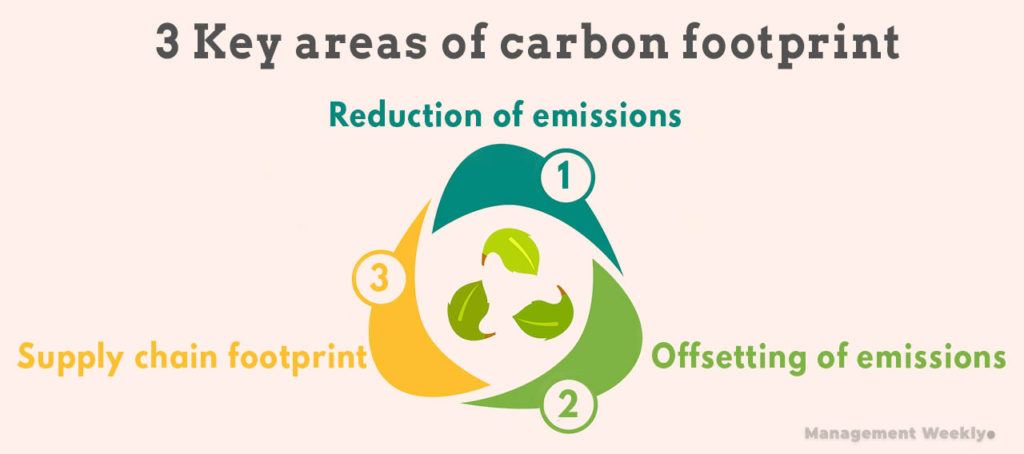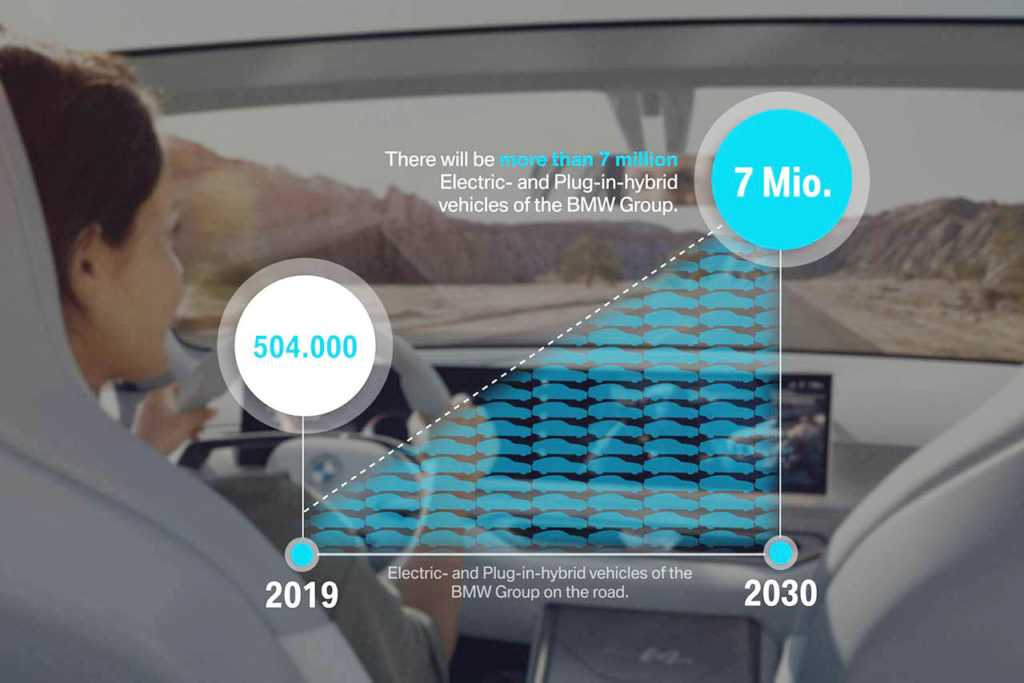The CEO of a large multinational corporation entered the conference room. It was fifteen minutes before the meeting was scheduled. They were about to discuss best practices followed by companies reducing carbon footprint. His secretary quickly switched on the air conditioner. It was on full blast. However, the room was still unbearably hot. “How much do we spend on our HVAC systems?” asked the CEO. The secretary replied, “I don’t know the exact numbers, but I am sure that it accounts for a major part of our electricity bill.” “Then add internal carbon auditing to today’s agenda,” replied the CEO.
Contents
What is ‘carbon footprint’?
The term has become popular over the last two decades. Now, it is commonly used in any discussion related to the environment. It has become imperative since sustainability has become an essential part of corporate strategy. The most widely accepted definition of the carbon footprint comes from the concept of ecological footprint given by Wackernagel. The ecological footprint is the amount of gaseous emissions associated with human-induced production and consumption activities.
However, Wiedmann and Minx developed the most appropriate definition after a perusal of several academic and non-academic definitions. They conceptualized carbon footprint as ‘The carbon footprint is a measure of the exclusive total amount of carbon dioxide emissions that is directly and indirectly caused by an activity or is accumulated over the life stages of a product.’
Why is carbon footprint important?
It is pertinent that we understand carbon footprint from a business perspective rather than an evangelist’s. Firstly, the carbon footprint is the key to the assessment of inefficiencies in our business processes. Secondly, it is not just an obligation to society but also mutually beneficial. Most importantly, the companies reducing carbon footprint gain in terms of increased understanding of their processes.
Most importantly, we need to understand that carbon footprint analysis is like a new set of eyes. Something that can potentially help us look at our business processes. For instance, direct emissions account for only 14% of the total carbon footprint. However, including the energy input, we get to a figure close to 26%. This approach helps us understand the inefficiencies hidden from plain sight. It can help us chalk out strategies that can potentially enhance profitability.
Critical areas of carbon footprint

There are three key approaches to reduce the carbon footprint.
- Reduction of emissions
- Supply chain footprint reduction
- Supply chain footprint reduction
Reduction of emissions
Direct emissions are one of the significant sources of greenhouse gases in the atmosphere. Greenhouse gas emissions that due to human activity are called anthropogenic GHG emissions. Although there are natural sources that contribute to greenhouse gases, our concern is human-induced GHG emissions.
There are different approaches to reduce GHG emissions. These approaches are primarily driven by your industry and type of business activities. If you are interested in reading more, then you may check out these resources:
- Reducing industrial GHG emissions (source: Government of the Netherlands)
- Actions for individuals to reduce GHG emissions (source: COTAP.ORG)
However, here are four common ways how companies reduce carbon footprint:
- Replacing dirty energy with clean(renewable) energy.
- Adopt a circular economy over the linear economy.
- Process improvements that will result in lower emissions.
- Entrapment and conversion of effluents into by-products
Offsetting of emissions
The concept of offsetting your footprint is simple. Let us consider a relatively simple example. Consider that you drive to work every day. Your commute has a carbon footprint (primarily but not limited to the fuel you burn). One approach is to reduce the emissions, where you switch over to cycling to work. Tada, now you do not generate any CO2 (directly) when you commute to work. Problem solved. However, not everyone can cycle to work. In that case, what can you do?
The second approach is to offset or neutralize your emissions while still emitting the same amount of greenhouse gases. How is that possible? Here are the steps that you can do to ‘offset’ your emissions. Firstly, you calculate how much CO2 your car produces when you commute. You find out that you generate x kg of CO2 per month. You estimate that you need to plant n number of trees which absorb x kg of CO2 per month. Therefore, you plant n number of trees. Now every month, your net contribution to the atmosphere is almost zero kg of CO2.
Now, extend the same analogy to industries. Consider that you run a business. Therefore, you generate a carbon footprint due to your business activities. You can plant trees to offset your emissions. On the other hand, you could fund someone else who plants trees or does some other activity that reduces the greenhouse gases on your behalf. For instance, it would cost you about $12 to offset a tonne of CO2 in the United Kingdom. One of the examples of a service provider that can sell you carbon credits is Terrapass. They are a California-based startup working with clients worldwide. Therefore, companies reducing carbon footprint through an external vendor also help the environment.
Supply chain footprint reduction
A supply chain is essentially a network of suppliers and vendors that work together to manufacture, transport, store and distribute business goods in different stages. Each node of the supply chain has a carbon footprint. However, there are several ways by which you can reduce the negative effect of these activities.
- Reduction of waste: the Toyota Production System posits that there are three types of waste, namely Material waste (Muda 無駄), Unevenness (Mura 斑), and the waste due to overburden on workers ( Muri 無理).
- Process improvement: processes are inherently inefficient. One of the ways to reduce the footprint of the supply chain is to analyze the processes. This will help us find areas for improvement.
- Developing stringent vendor management: Larger corporations have realized that the product’s footprint goes far upstream and downstream than just production. Most companies now require the vendors to disclose the source of materials. Some companies require their vendors to follow environmental norms and certifications.
Example of companies reducing carbon footprint
BMW (Automotive)

BMW has gained a reputation for being the most environmentally conscious automotive company. They built this reputation over the last decade. Firstly, they looked at their supply chain carbon footprint. They minimized transportation carbon emissions by over 40%. Most importantly, from switching over to renewable fuels in their delivery trucks.
Secondly, they have invested heavily in electric vehicle technology. Although, BMW is not the only company reducing its carbon footprint by going electric. They are not the only manufacturers attempting this transition. However, their goal is to ensure that half the vehicles they sell by 2030 are electric. You may read more about their commitment and goals in their reports and disclosures.
Microsoft (Software)
The Microsoft CSR program is a benchmark. They have a detailed, systematic strategy to reduce their carbon footprint by 2030. Further, the company claims that they shall neutralize all the carbon contributions. In other words, they shall remove the CO2 generated from its activities since their inception in 1975!
Microsoft Corporate Social Responsibility Analysis (click to read)
Read more about Microsoft’s CSR program in our MagWe Insights article
Microsoft has developed a pathway to carbon neutrality:
- Cut down the operational carbon emissions
- Reduce the supply chain emissions
- Avoid the offsets due to emissions
- Proactively remove carbon impact
Lyft (Transportation)
Lyft is one of the largest cab-hailing apps in the world. It has committed to reducing the environmental impact in different ways. Firstly, they have planned to make all of their fleet electric by 2030. Nevertheless, this seems like an audacious goal—especially given their presence in many countries.
Firstly, this transition will help them achieve a zero-emission goal. Vehicles contribute a significant chunk of urban air pollution. Secondly, the transition to electric cars would reduce the operating costs for their drivers. Some of these cost savings may benefit the customers through cost savings.
Puma (Apparel)
The apparel industry’s environmental impact may not be as visible as automotive. Nevertheless, it is one of the highly polluting industries. United Nations Environmental Programme made the life cycle assessment of a pair of jeans. They found that a pair of jeans takes about 3781 liters of water in the entire lifecycle. Consequently, each pair of jeans has a carbon footprint of about 33 kg of CO2. On the other hand, it generates about 24 kilograms of CO2 for driving a car for 100 kilometers. (footprint of driving a petrol car for 100km (62miles) at the fuel economy of 16.66km/l (37mpg))
Puma is a breed of environmentally conscious companies. Companies that take bold action and set the trend for others. In a bold move, they disclosed their carbon footprint for products. They are laying the environmental impact of their products out in public. Most importantly, they are committed to reducing the impact of their leather products that seem to have the highest carbon footprint. They estimate to cut down their carbon emissions by over 35% by 2030.
Amazon (Retail & Software Services)
In this article, we barely scratch at how these companies are reducing their carbon footprint. However, I have handpicked all of these examples to ensure they represent companies that have set a reference point for others. Finally, we take a look at the largest retailer and service giant, Amazon.
One of the differentiating factors for Amazon is that they have already achieved some of their environmental goals. They have reduced the carbon footprint of their packaging. They have committed to reducing the carbon footprint of their supply chain by 2030. Amazon plans to go carbon neutral by 2040. Their journey towards reducing the carbon footprint has been difficult. It is more difficult for high-growth companies to make this transition. However, Amazon cut down its carbon emission intensity by 5% between 2018 and 2019.
Read more about Amazon’s CSR program in our MagWe Insights article
Going forward
The average global temperature is rising. There is an ocean of evidence(no pun intended) that demonstrates the rising sea levels, shrinking glaciers. We can no longer debate whether there is global warming. Every other year, we see sweltering summer temperatures breaking previous records. The record-breaking temperatures of July 2019 were broken by May 2020. It is high time we measure our environmental impact. Measure it deeply, and act upon it. After all, what gets measured gets managed. Here are 3 simple methods for eco computing to further reduce your carbon footprint.
